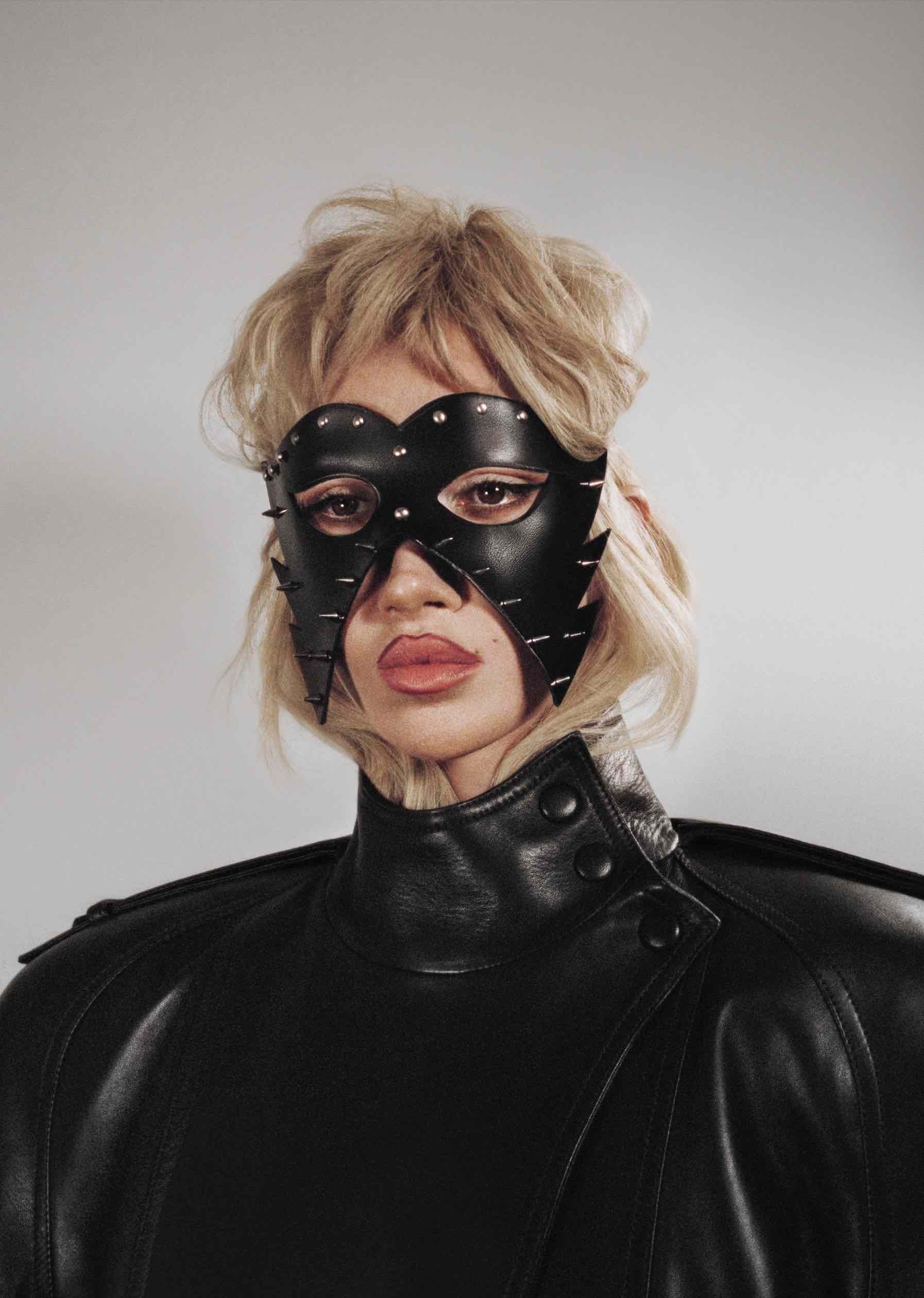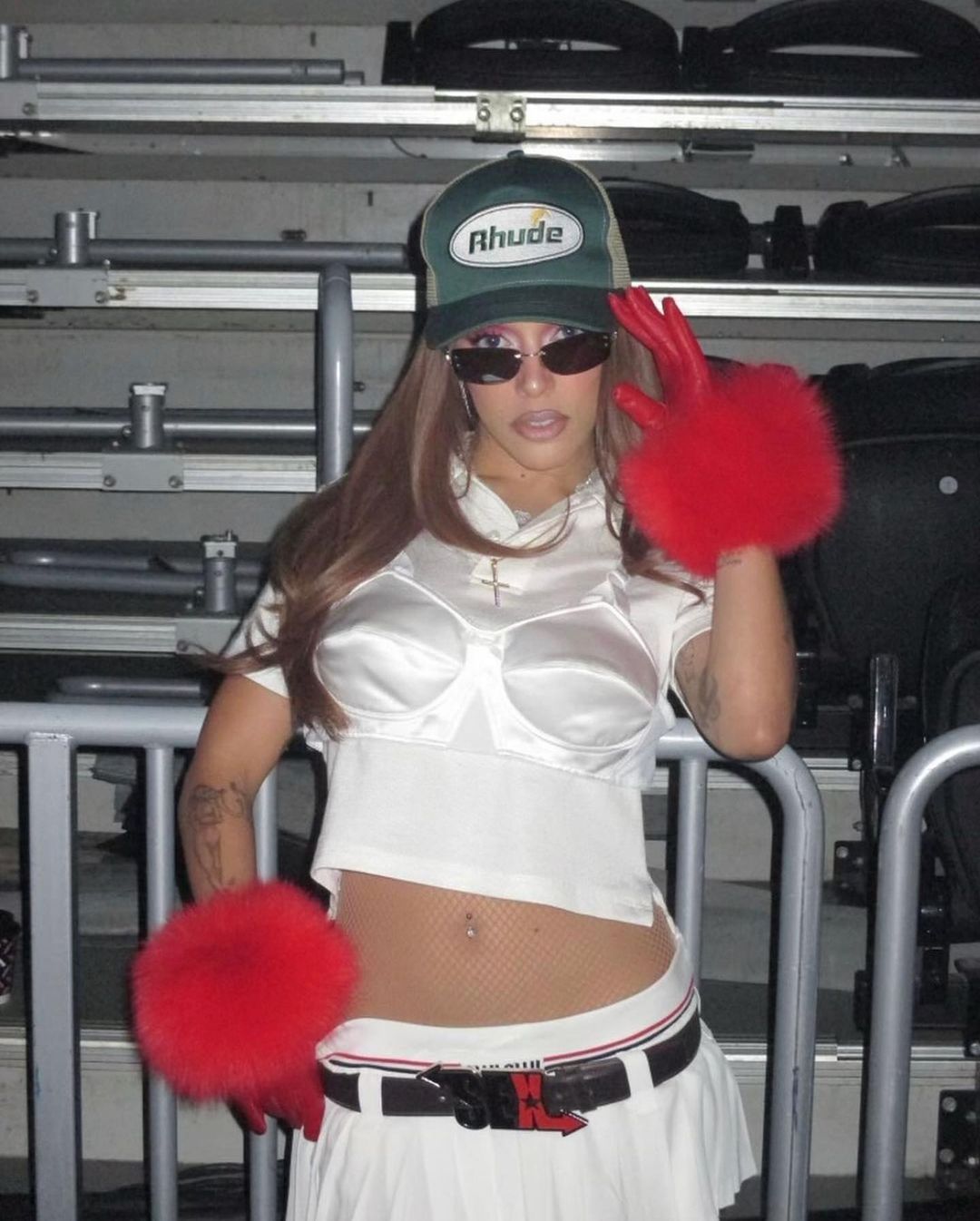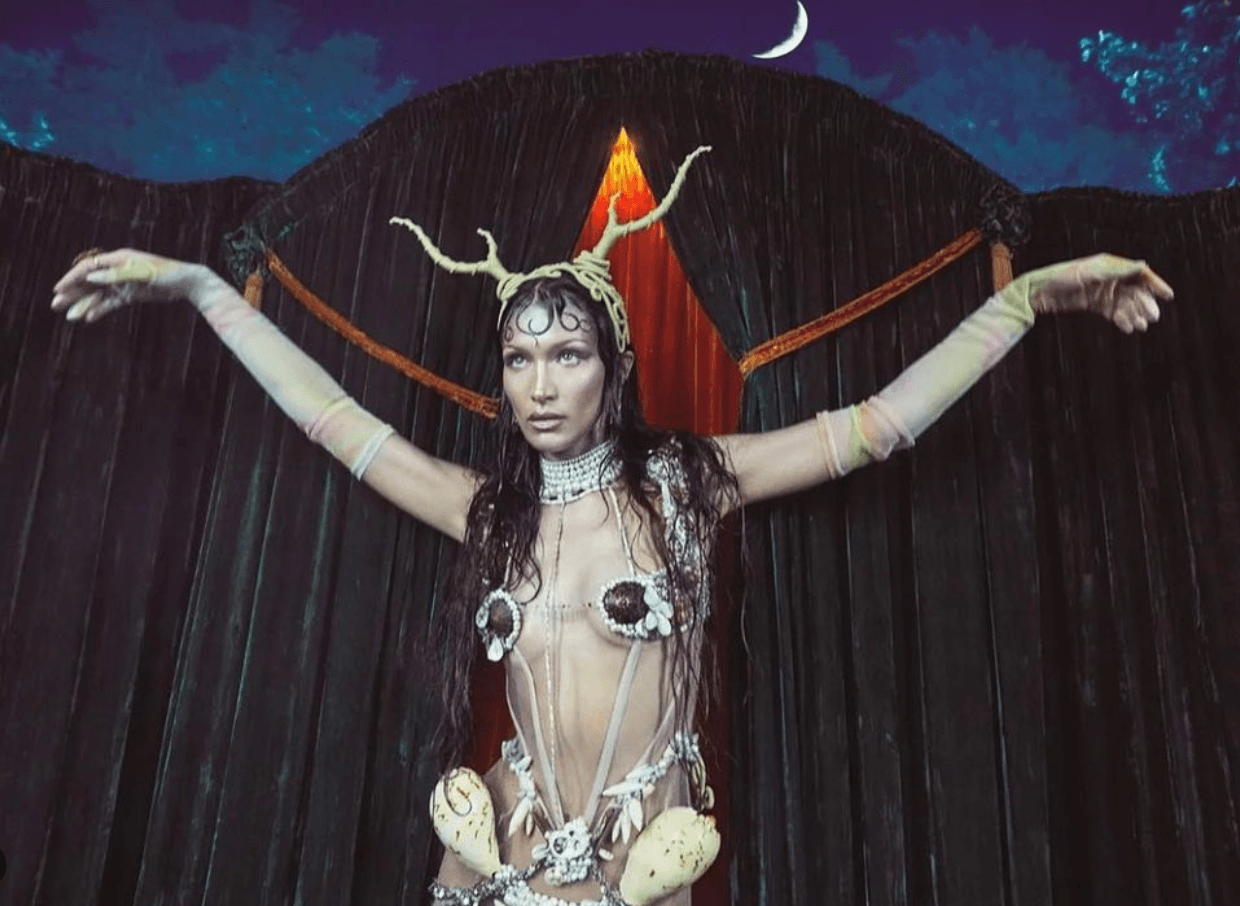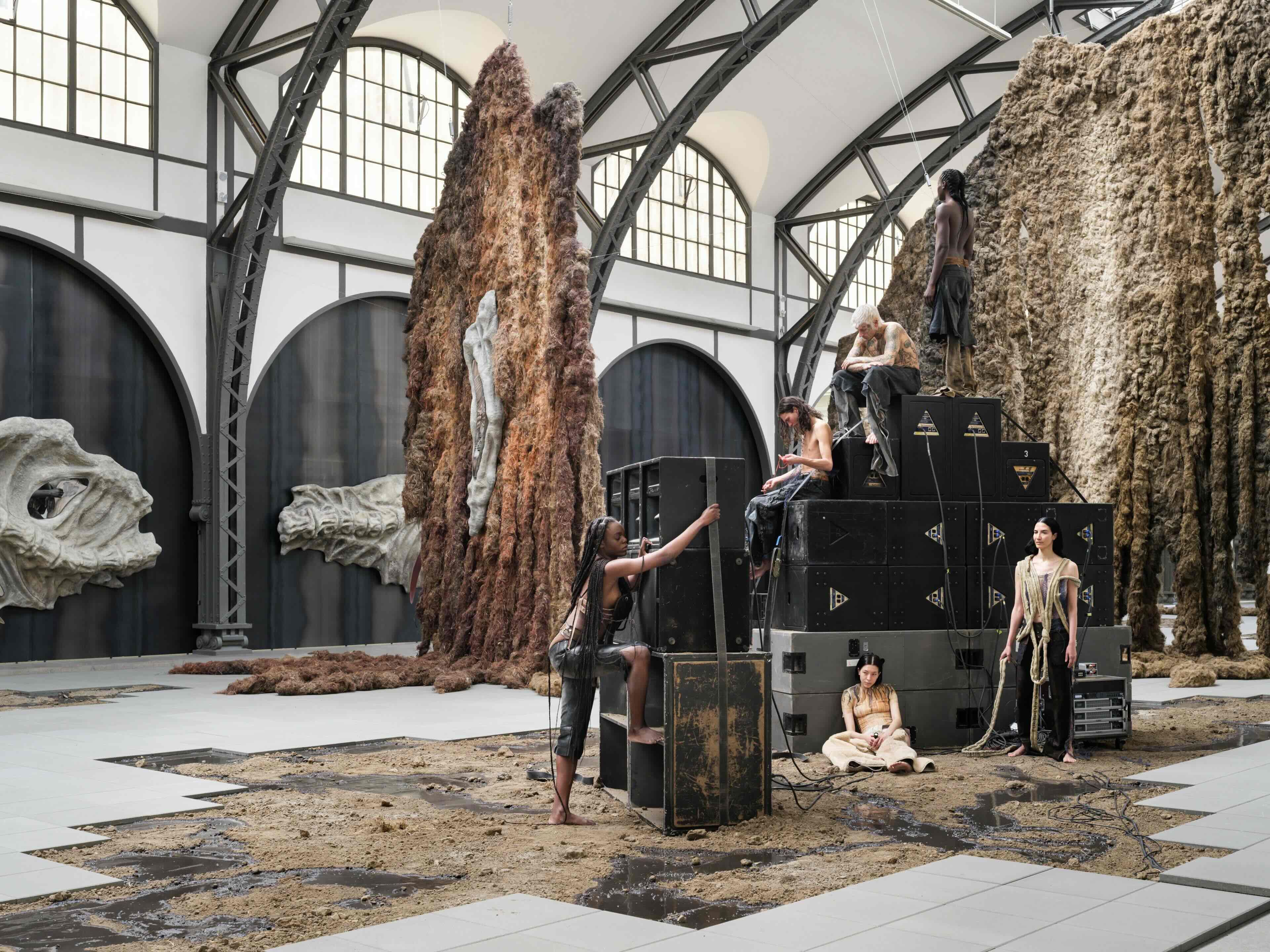The Miu Miu Moment: Not a Girl. Not Yet a Woman
|SHUMON BASAR
not a girl. not yet a woman
On the heels of MIU MIU’s FW-24 show, whose collection notes included the aphoristic “Girlishness is a word we can revalue,” we’re publishing SHUMON BASAR’S essay from Issue #44 on the current “Miu Miu Moment” that’s been 30 years in the making.

I’m heading to the SS-24 Miu Miu show during Paris Fashion Week in October 2023, and an industry-insider friend joyously affirms that it is “the hottest ticket in town.” Such is the frenzy around what I’d like to call “the Miu Miu Moment.” Metrics of zeitgeistness are fuzzy at best, but it’s mostly an ambient feeling shared en masse and, increasingly, online. The Miu Miu Moment, 30 years in the making, is here. What exactly is it?
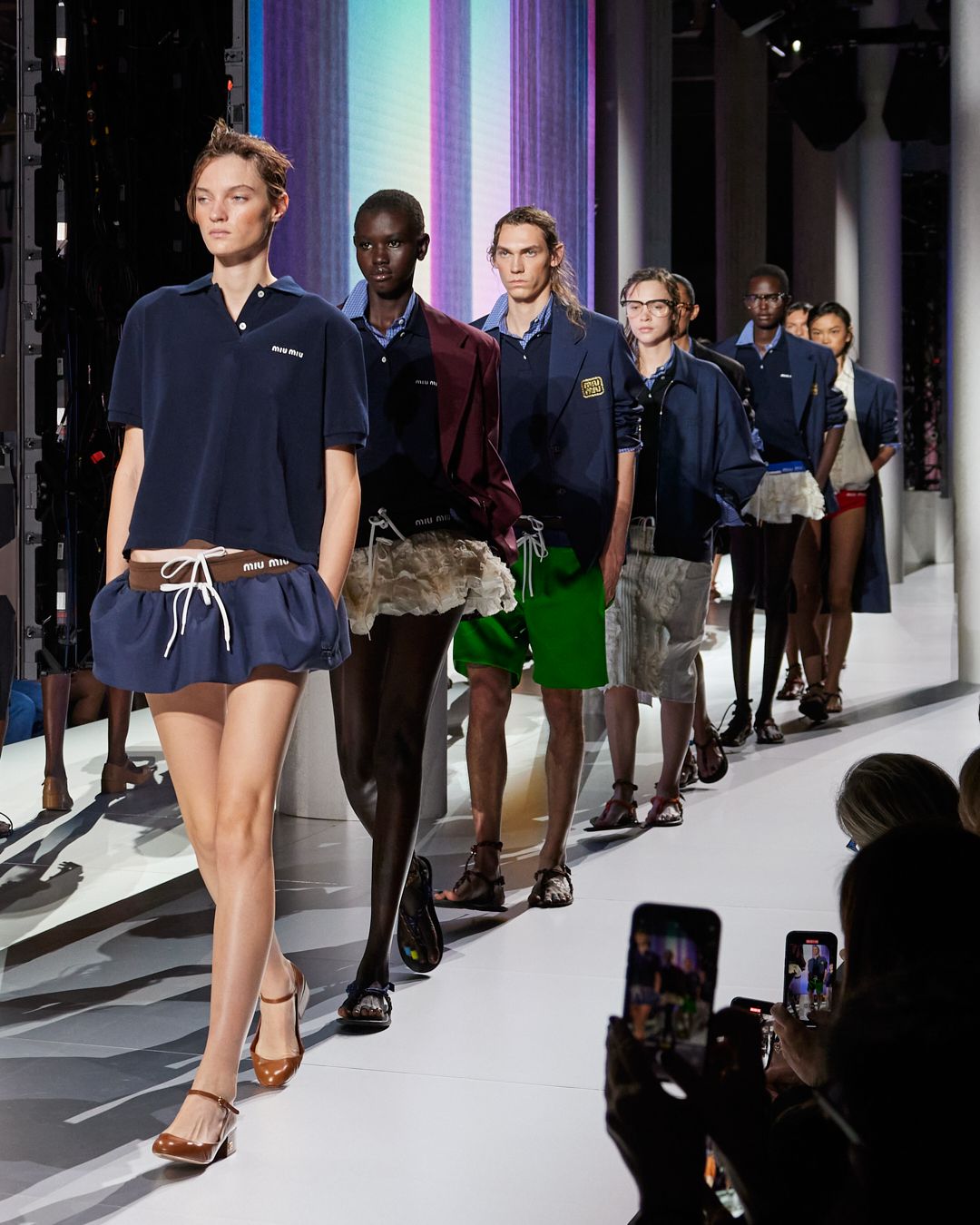
The SS-24 invite arrives as a canvas cut-out, with hand-painted clouds on one side: a small fragment of the sky crashed down to earth. Gravity & Grace is the title of Qatari-American artist/filmmaker Sophia Al-Maria’s film commissioned for this season’s show. “A multidimensional fable in the eye of a storm,” Al-Maria calls it in the artist statement, “starring Ayesha Hussain as archetypal twins who gaslight, gatekeep and girlboss.” Before the models reach the catwalk at the Palais d’Iéna, lightning crackles on the screens and thunder rumbles as Hussain draws a samurai sword and gives us a murderous glare. What ensues is a Jungian battle of will between new mythological figures clad in Miu Miu. The music (by Takiaya Reed of Divide and Dissolve and Scarlett Viney, arranged and with additional composition by Asma Maroof, Daniel Pineda, and Joshua Fay) forsakes the by-now-default, ersatz electronic soundtrack for almost all fashion shows in 2023 and, instead, summons B-movie giallo genre muscle, which sends 1970s raw rock through my legs and into my giddy stomach. Traditionally, one might call it “aggressive masculine energy,” but we are deep into queered times, and Al-Maria’s summoning of nonpatriarchal power echoes Miuccia Prada’s forever project of cross-messaging the codes of fashion as inherent to girls, women, boys, and men. Mrs. Prada (which is how she is referred to within fashion and within the company) once explained to me how she often takes quintessential details from men’s clothing and migrates them to women’s – and vice versa: an epaulette, a collar, a bow. “She has become so masterful at cozying up to the clichés of gender,” writes Vanessa Friedman in her recent New York Times appraisal of the Miu Miu Moment, “burrowing down and recontextualizing them, so good at using clothes to wrestle with the desire to be pretty and frivolous and serious and stressed all at the same time, that her work has started to shape the culture it reflects.”


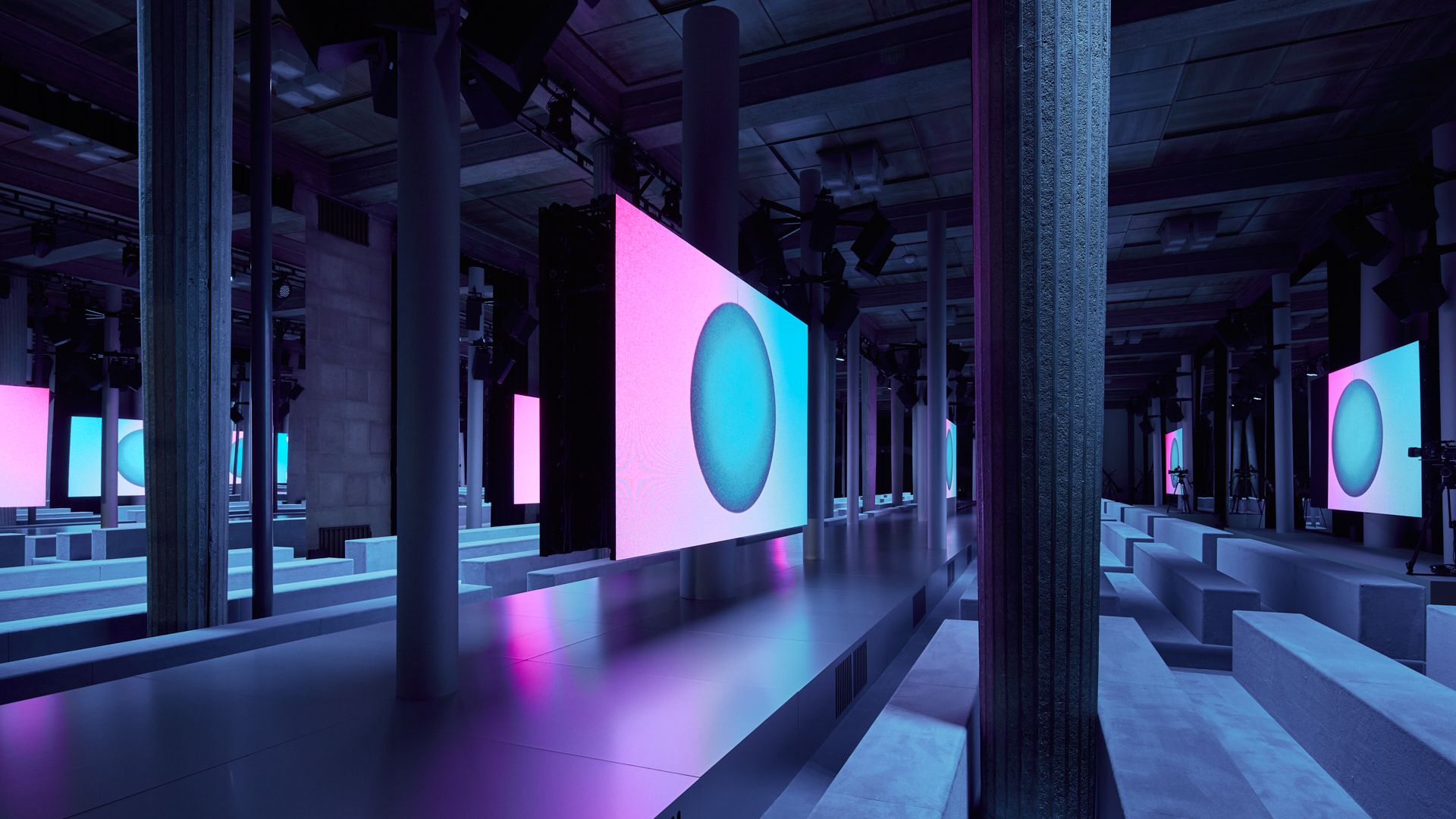
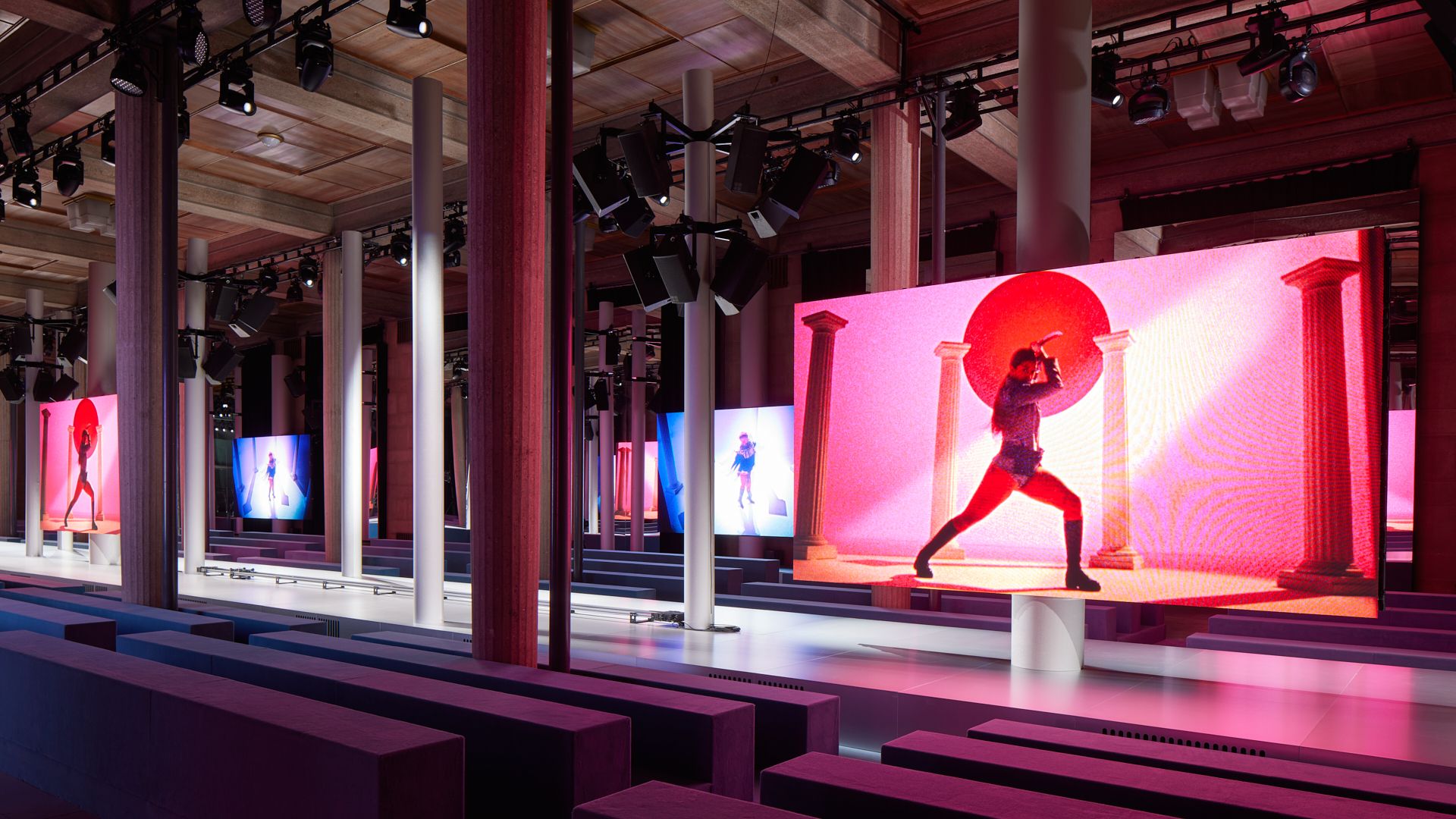
The SS-24 collection itself feels like a collection of collections, which cannot have been a coincidence, as it’s Miu Miu’s 30th birthday – who doesn’t look backward on major birthdays? – and this show is design director Fabio Zambernardi’s last at the Prada company, which he joined in 1982. The SS-24 show recalls archetypal Miu Miu idioms from the last three decades – copious legs, pleated short skirts, beach stripes now augmented by Gigi Hadid in hot librarian reading glasses and exposed hip bones draped by low-slung suede belts and 90s white-rap underpants. Much like the effect that the Prada SS-24 show had on me a few weeks earlier (Zambernardi’s last there, too), I feel like I am time-traveling, or maybe season-traveling – not for reasons of wistful nostalgia, but because a “knowledge of history is crucial” in shaping one’s attitude about the future, as Mrs. Prada tells us via la Repubblica. “Now people suddenly see Miu Miu differently,” Mrs. Prada says in Perfect Magazine when acknowledging the Miu Miu Moment. “Why? I don’t know. That’s why I wanted to look a bit at my past shows.”
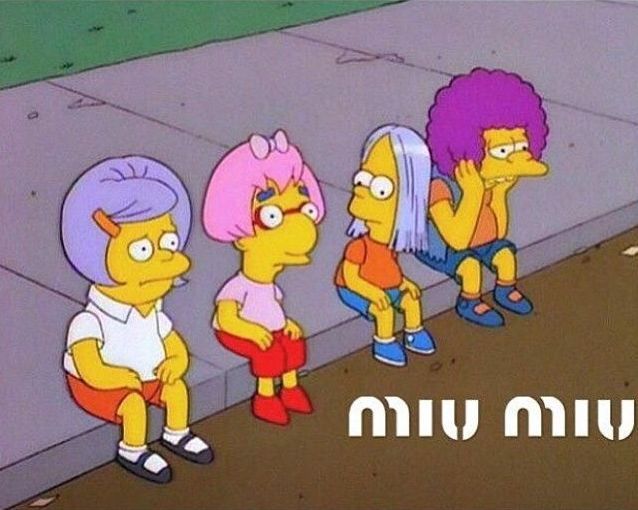
Since SS-22, Miu Miu has initiated a new era of meme-level viral items that channel culture’s unquenchable thirst for thirsting.
Unlike the goliath Prada brand – established by Mrs. Prada’s grand- father Mario and grand-uncle Martino in 1913 as Fratelli Prada – Miu Miu, which was publicly launched in 1993, is very much the invention of Mrs. Prada and carries the nickname by which she was known within the family. 1993 was a frenetic time of diffusion ranges, when successful houses – such as Armani, with Emporio Armani – increased market reach by introducing more affordable and often more distinctly wearable lines. At the time, Mrs. Prada’s intent with Miu Miu was not simply to make Prada accessible at lower prices but, instead, to establish it as a more subversive articulation of other parts of her personality. Initially, she also wanted to attract a clientele younger than the one Prada drew in the 90s. The FW-1993 Miu Miu collection summons cowboys and cowgirls, sheepskin and soft fur gilets. Once again, there’s a counterpoint between traditional gender codes, a kind of urban prairie dream. One notable way that Miu Miu was prescient during its first decade or so was in bringing sports and high fashion together, such as hi-tech sneakers with kitten heels, a combo that today’s Gen Z might claim as its own indigenous, chaoscore language. And for a short period – one I distinctly remember – Miu Miu dressed men, too, in minimalist items laced with technical wit. Many of these pieces form today’s Instagram grail, the stuff of fabled fawning. I regret losing a pair of three-quarter-length Miu Miu pants (with elasticated detailing that treated the bottom of each leg like a shirt sleeve), and I know nothing will ever come close to its confident summer ease.
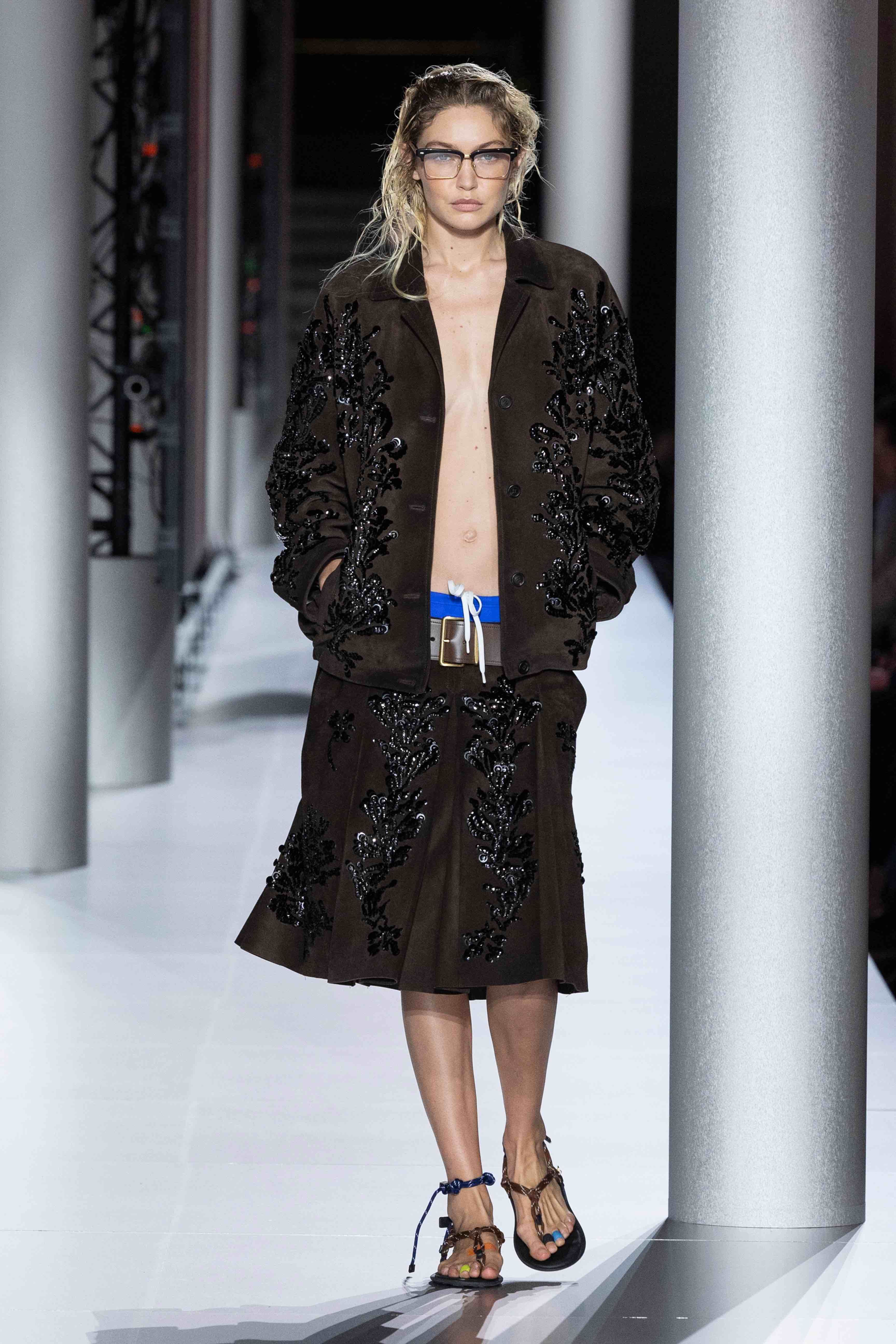
By the mid- to late 2010s, once Miu Miu’s lucrative lines of iconic matelassé handbags and cat-eye sunglasses found commercial success, we were introduced to the next iteration of the Miu Miu Girl. Mrs. Prada’s lifelong interest in uniforms then seemed to borrow from school uniforms (think of those Mary Jane strap shoes) and the adolescent guile of Tokyo’s Harajuku girls. Oversized bows and doll-worthy collars. Faux crystal dress jewelry and pop socks. It all combined into a version of womanhood that relished cosplaying as girl.
In 2020, Raf Simons became co-artistic director at Prada, alongside Mrs. Prada, just as the Covid-19 pandemic took hold and virtualized so much of the world for us – including the fashion world. Starting with their first joint collection, observers took measure of how the dual DNA splicing expressed itself in their respective signatures and legacy codes. Arguably, Prada became even more Prada once Simons arrived with his customarily curatorial eye. In the infamous Prada triangle logo – now found as earrings, perfume bottles, or felt patches on the back of coats – Prada heritage has turned into inimitable modern code. It’s what Jon Pareles referred to as “the mass-produced secret” in the work of Peter Saville.
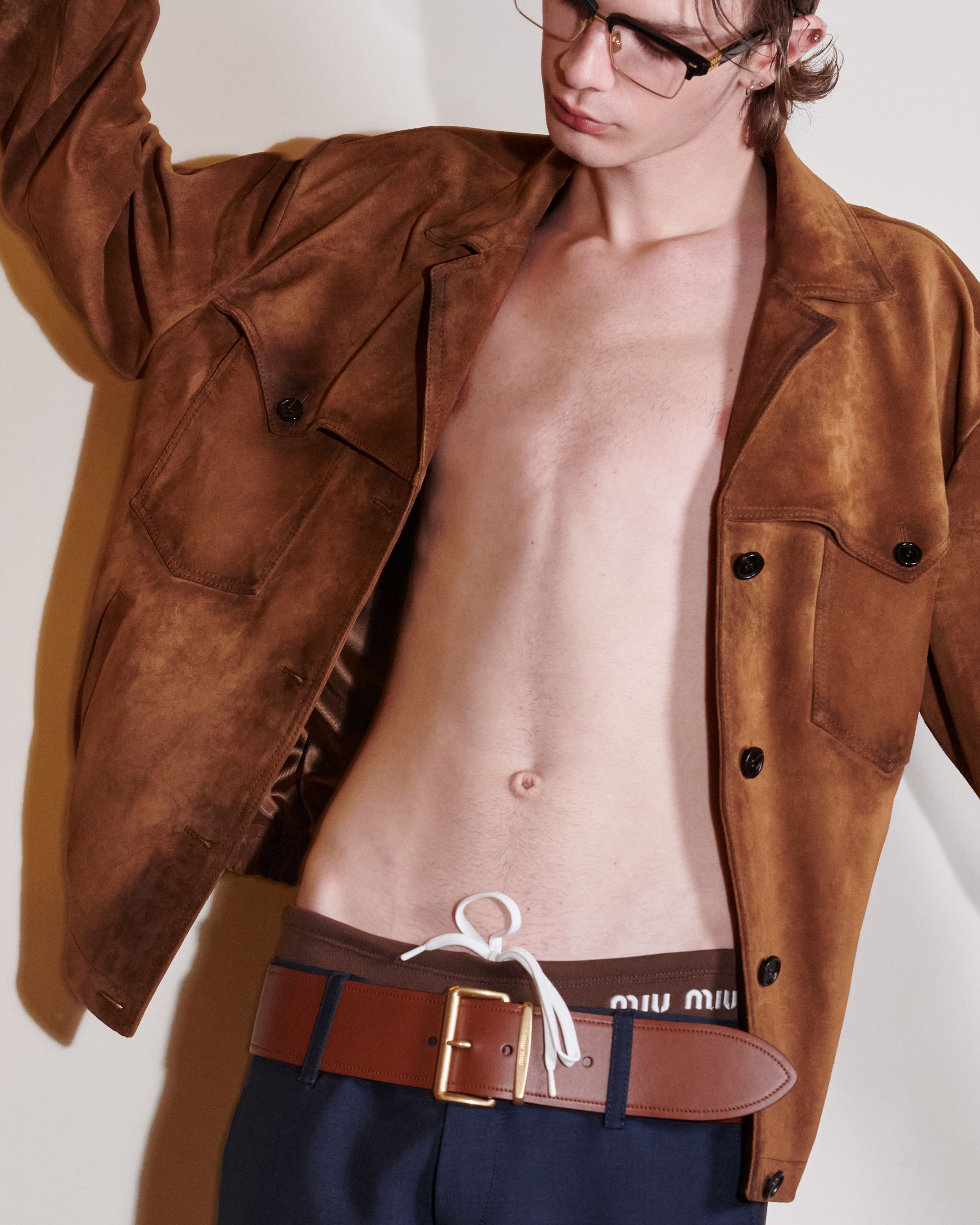
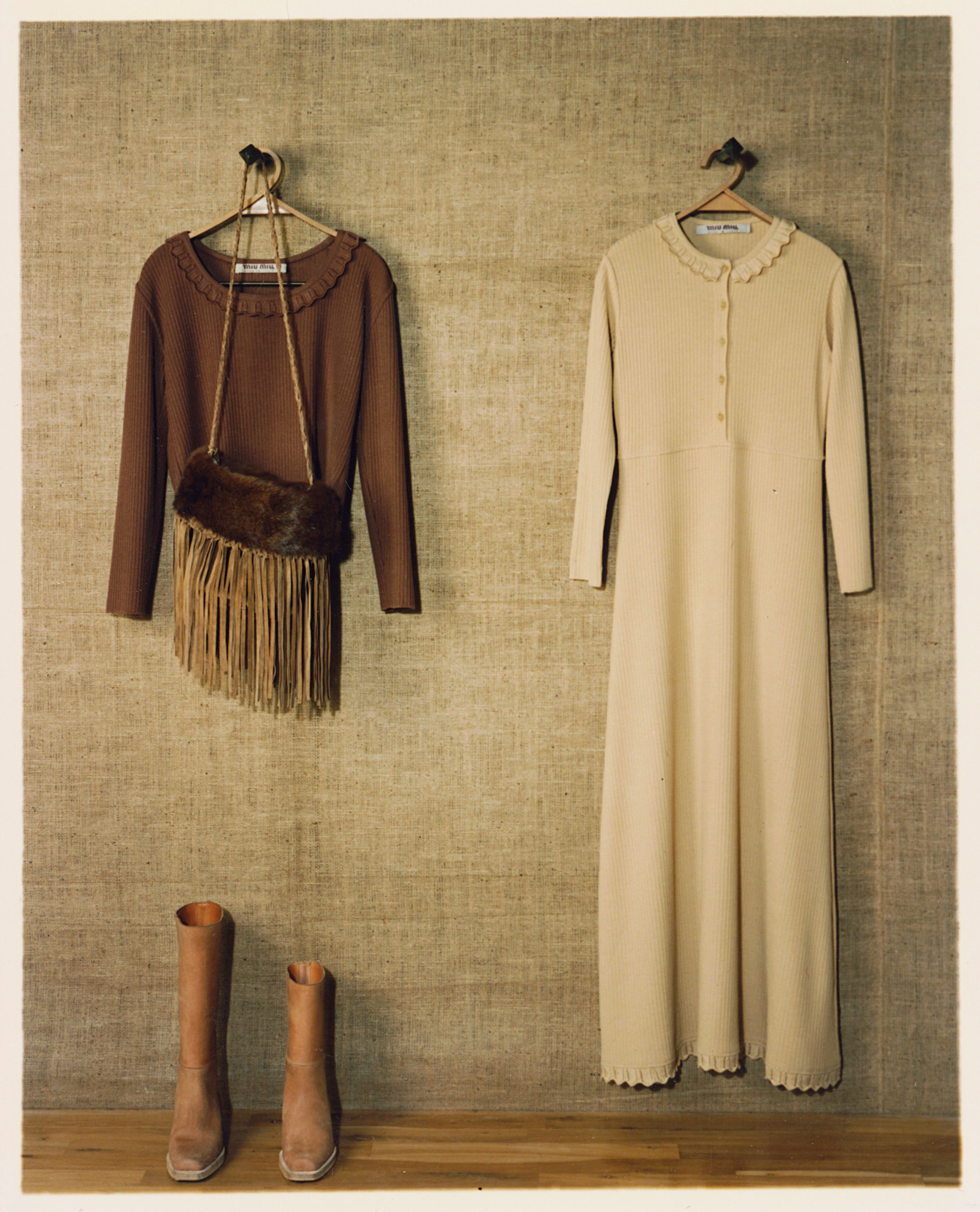
“It was a joke on fashion. All the time there is a new sexy area” – Miuccia Prada
Raf Simons’ arrival at Prada makes Miu Miu the only label that is now purely auteured by Mrs. Prada. It also signaled a phase shift in what Miu Miu means for her. “The fundamentals remain the same, but this shift to reality is very significant, and I’ve been working on it for two, three years,” she explains. I felt it in the Miu Miu FW-21 show, which – still during the early Coronacene – was presented as a film shot in the snowy Dolomite Mountains. Titled Brave Hearts, it depicts a balaclava-clad squad wrapped in technical ski-sports fabric and soft, Yeti(?)-sourced wools and furs. They march, as if in search of a new home, like Thomas Jerome Newton played by David Bowie in the sci-fi film The Man Who Fell to Earth. There was something sci-fi about the FW-21 conceit, at a time when pandemic-induced reality had descended into what I call “Sci-Fi Realism”: where everyday reality had become sufficiently indistinguishable from science fiction such that the latter became the dominant tool to decode and narrativize the disturbing present and stranger future. From that moment onward, each Miu Miu collection has felt more experimental than its predecessor – aided in large part by the dank-realism styling of Lotta Volkova.
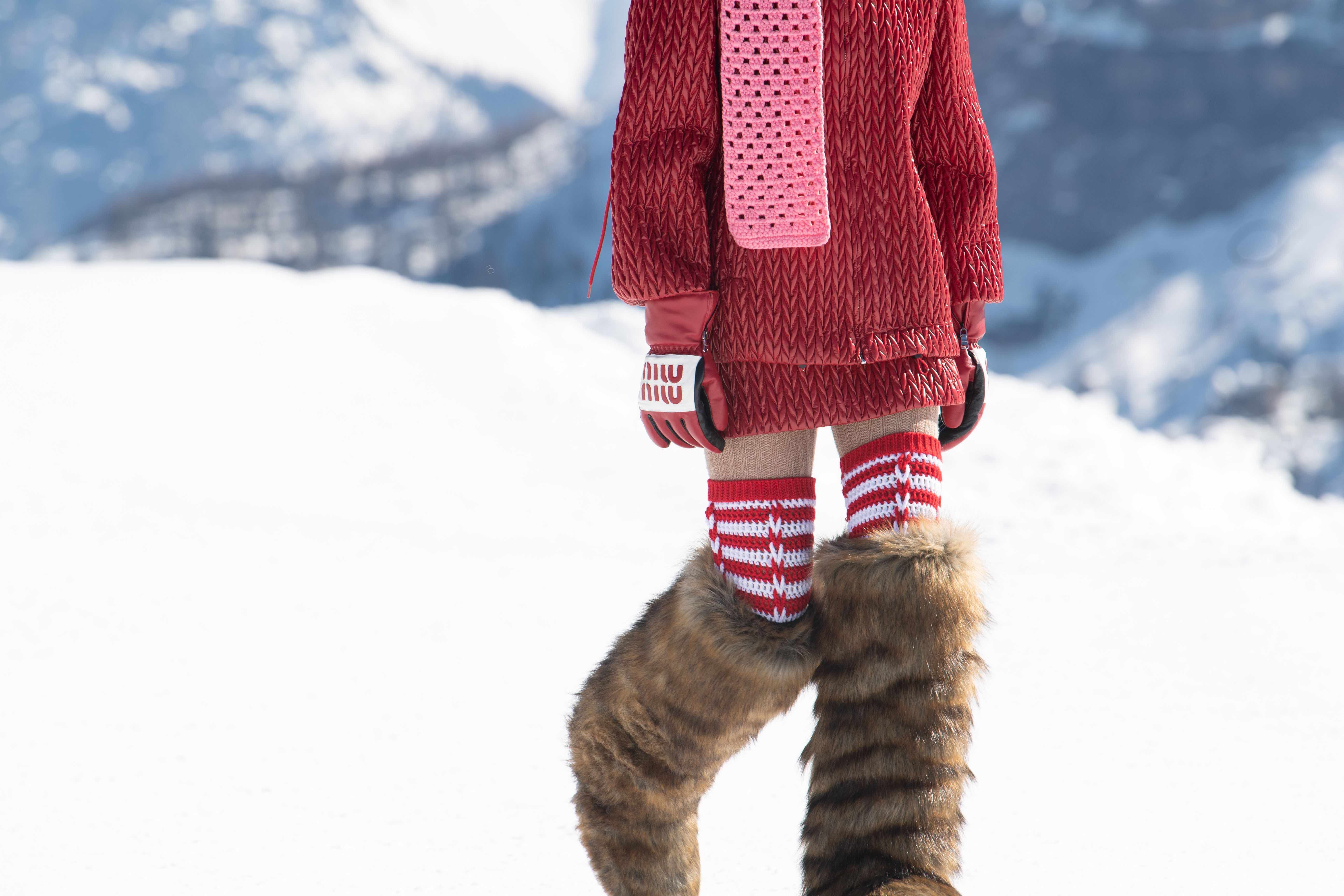
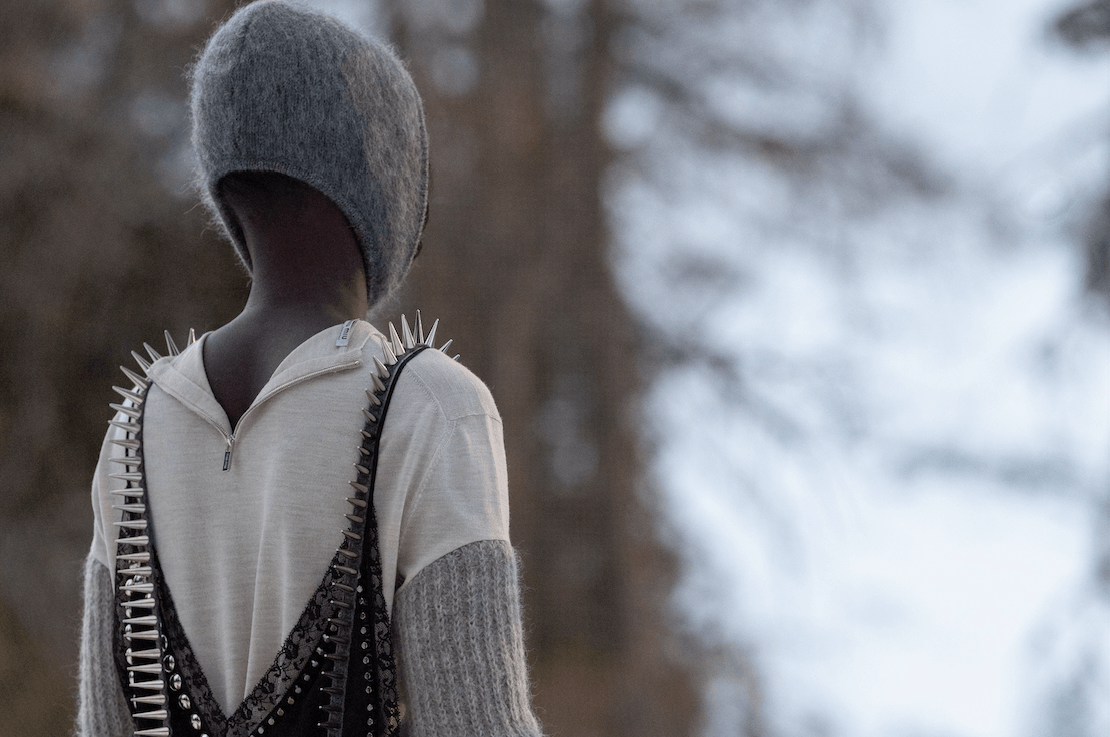
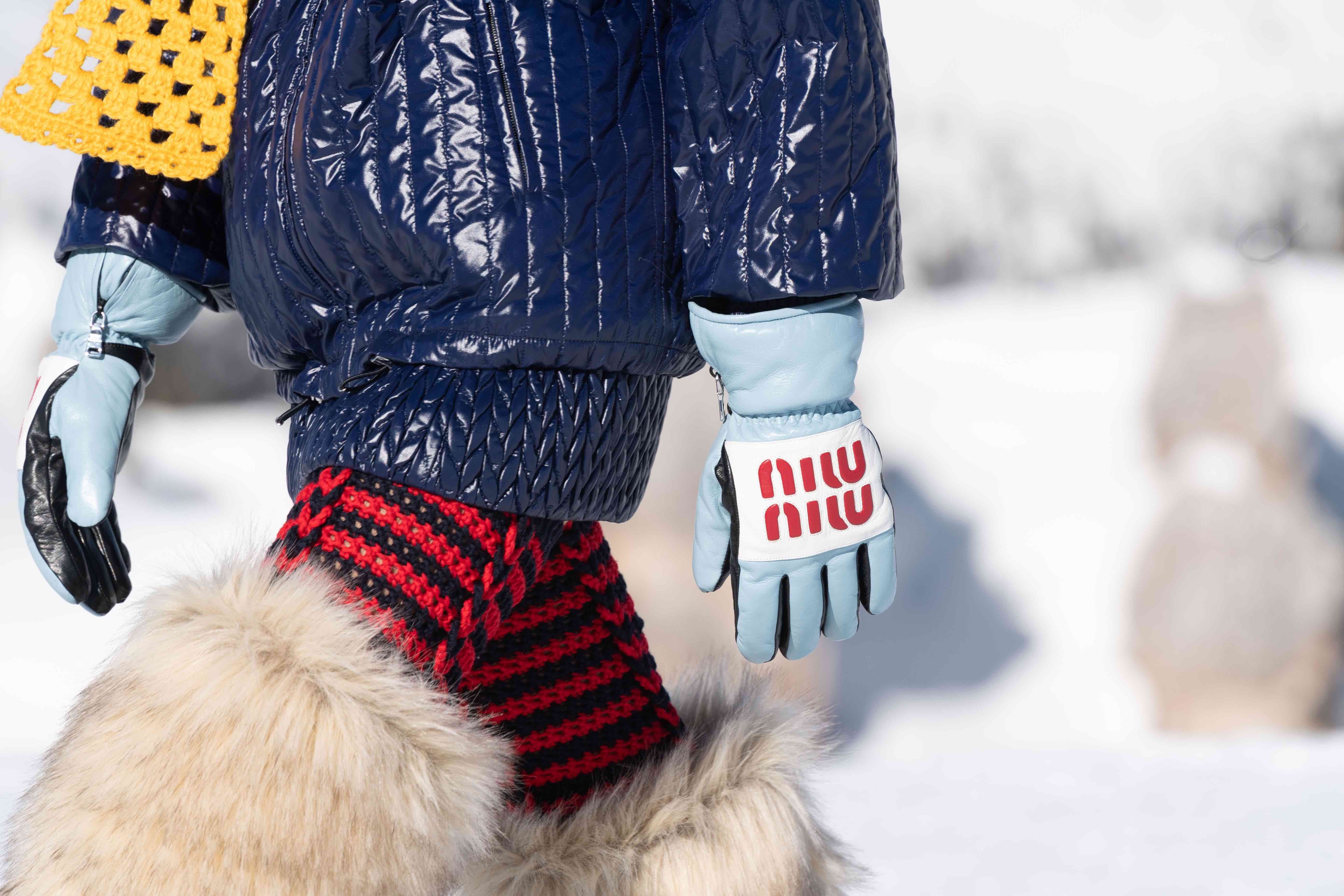
IT MEMES THIS
Experimental, yes; but dour, never. Quite the opposite: since SS-22,
Miu Miu has initiated a new era of meme-level viral items that channel culture’s unquenchable thirst for thirsting. It started with that matching set: pleated miniskirts lopped off to become nearly nothing micro skirts, and bra tops that did the same, leaving exposed seams and inside-out pockets with frayed threads. When asked why, Mrs. Prada responds, “It was a joke on fashion. All the time there is a new sexy area: sometimes it’s the leg, and after [gesturing at her midriff] it’s from here to here, and after it’s the back. I said, listen, this [gesturing at the area above her midriff] is not trendy at all. It was a comment on erogenous zones of the body.” The micro skirt was an internet readymade, embodying social media’s twin lust for hypersex and delicious outrage. Nicole Kidman – then 54 years old – fronted Vanity Fair’s February 2022 issue in said twin set, looking eerily like an Occidental Harajuku teenager. This caused op-ed writer meltdown in mainstream media, either for or against the look, and whether it was age appropriate for someone Kidman’s age. The top-and-skirt combination also spawned its own Instagram account and fanfic reproductions.
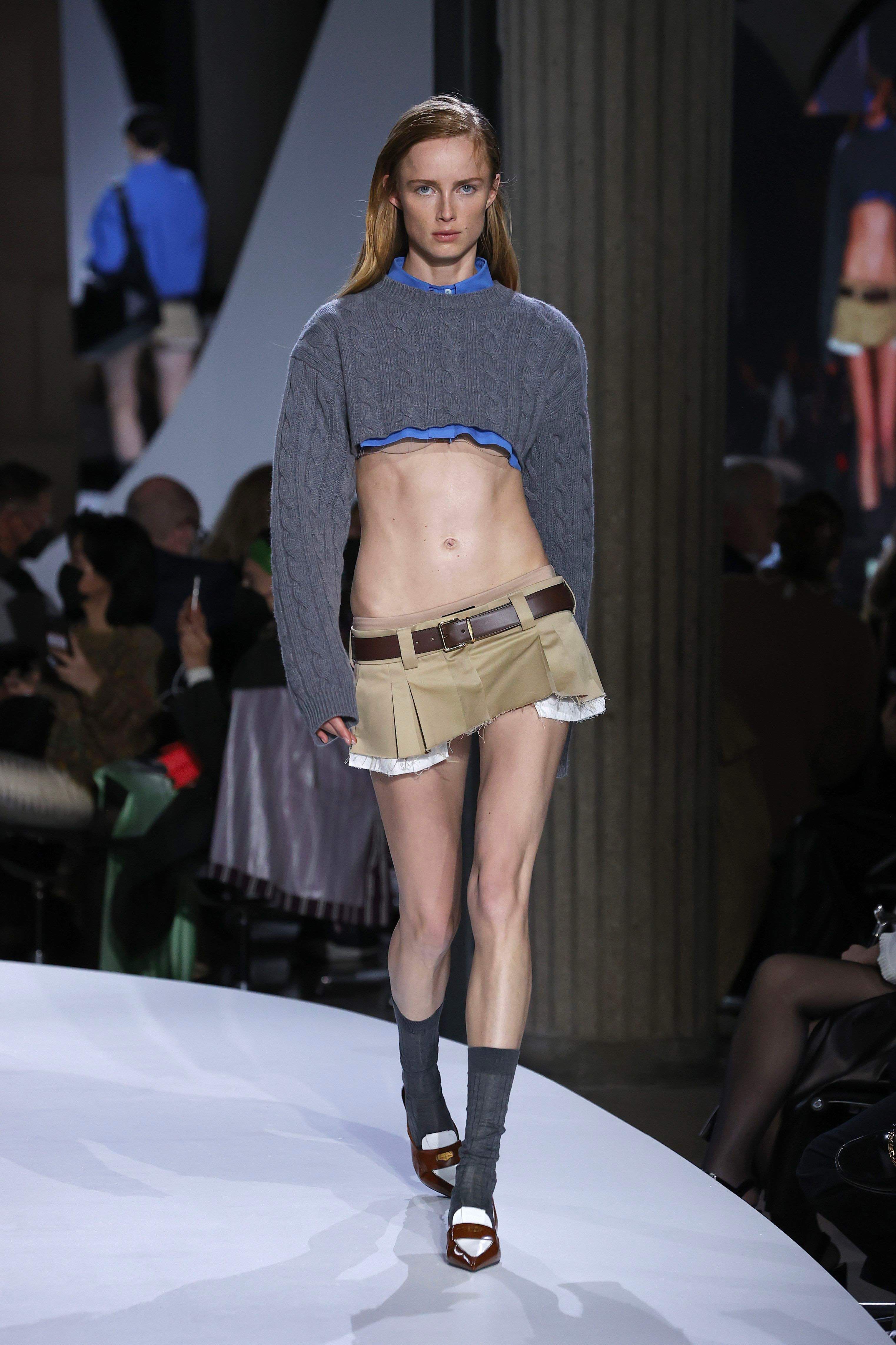
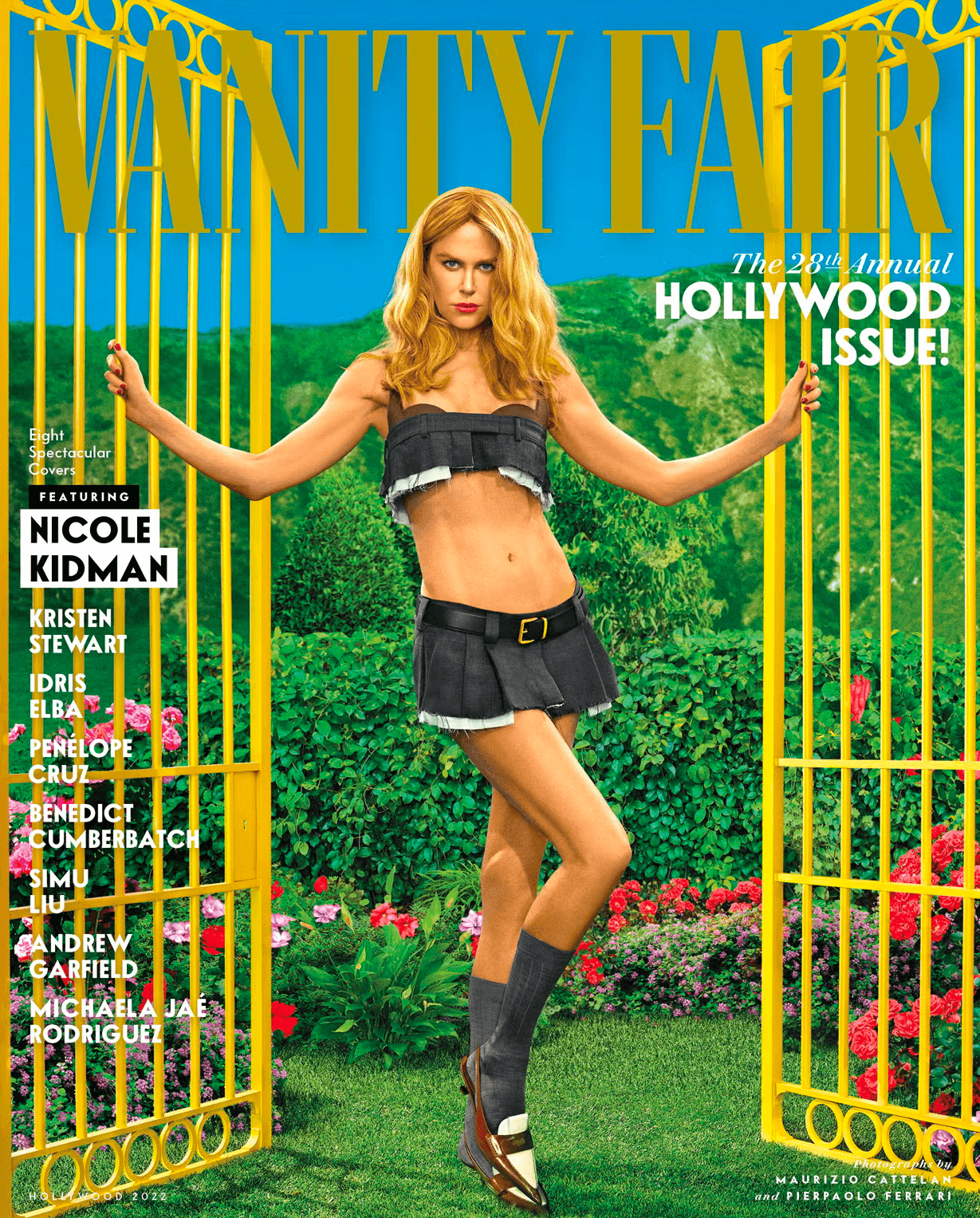
Then, in the FW-23 show, actor Emma Corrin debuted the next memetic Miu Miu product: jewel-encrusted panties. Another design that turns inner-wear into WTF outerwear, these panties further “fashion clichés of what is sexy on the body,” as Mrs. Prada puts it. British Vogue’s Julia Hobbs subsequently reported to work at Vogue House in London to test-drive “Miu Miu’s Sparkly Knickers in Real Life” and determine whether their absurdism was actually wearable.
At the recent SS-24 show, my hunch is that the micro-short rara skirt – which reveals just enough under-butt to make you (or me) look thrice – will be this season’s salacious sex-piece. Mrs. Prada comments upon this entire episode as a turn toward reality, which she says means designing “things that you want to wear. Not a fantasy. Not a story.”
Everything that Mrs. Prada elicits across the empire of arts, film, science, and clothing invokes this preservation of the past as a liberating mechanism to reimagine the present.
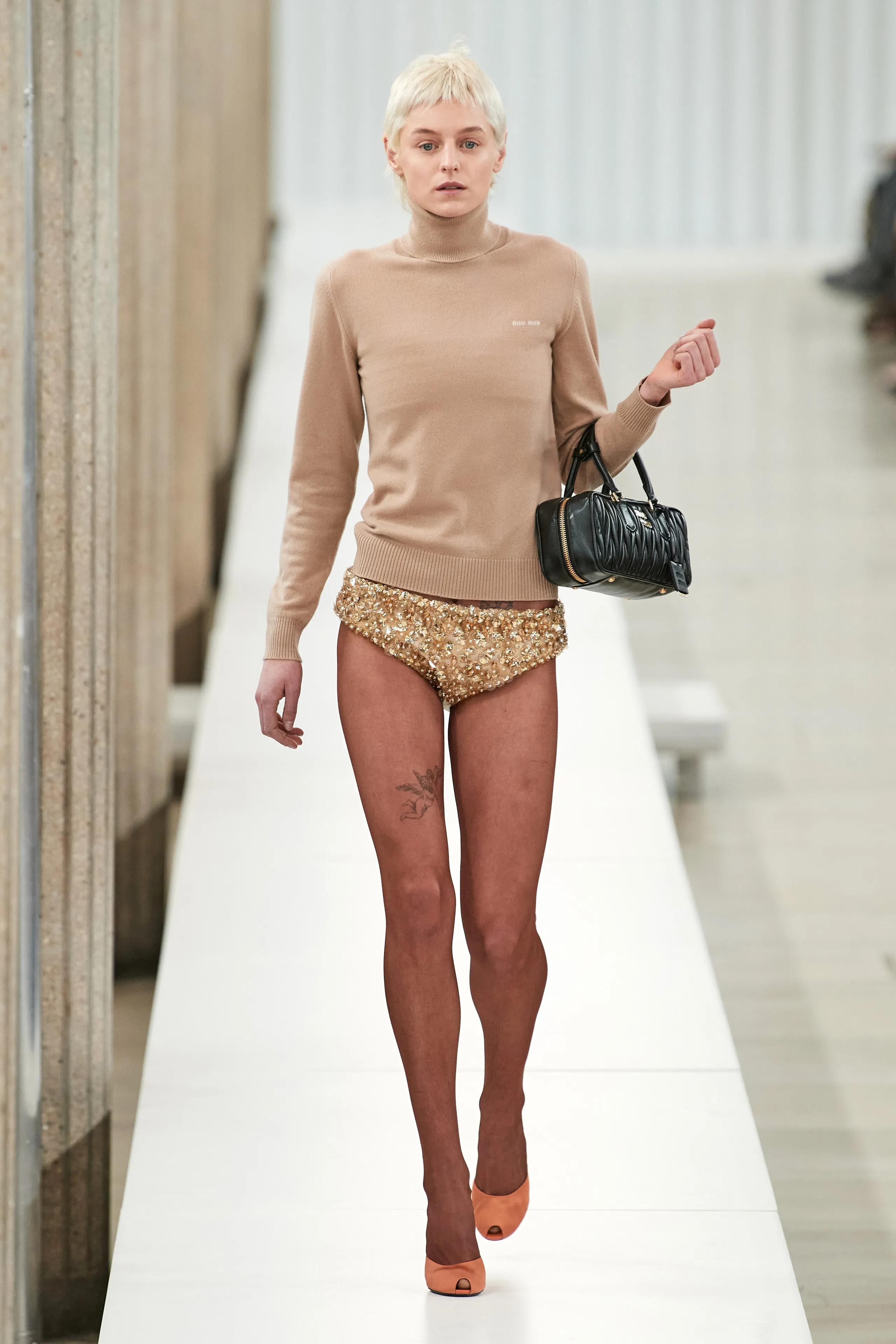
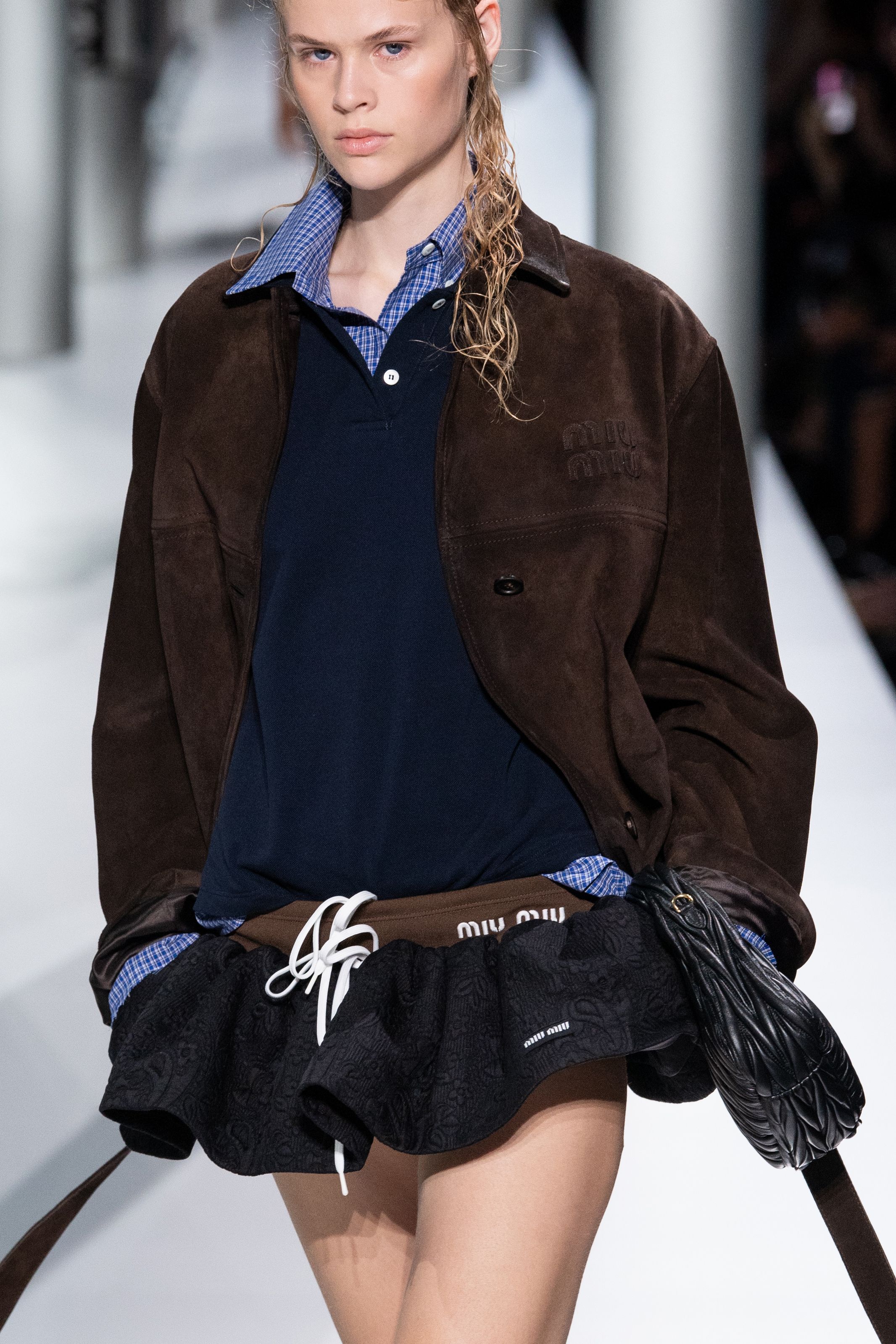
THE OTHER GIRL
This has reminded me of another kind of turn, captured in these infamous lyrics by Britney Spears:
I’m not a girl
Not yet a woman
All I need is time
A moment that is mine While I’m in between
In November 2021, almost 14 years after a Los Angeles court deemed Spears unable to care for herself and stripped the singer of control in nearly every aspect of her life, a judge ruled to end the conservatorship that Spears said had long traumatized and exploited her. She told the court she felt forced by the conservatorship into staying at a mental health facility and performing against her will – a nightmare in which a woman could never grow out of the girl she was when she first became famous. The world rejoiced at Spears’ breaking free, and ever since, we have seen a very different Britney: one who dances like a bikini-clad whirling dervish on her Instagram – once, while carrying knives. She later clarified that they were “not real.” Her long, erratically punctuated captions – which hinted at what was to come in her new autobiography, The Woman in Me (2023) – read like emancipated declarations that have escaped from her hitherto imprisoned id. This Britney is fantastically in-between: not a girl, and not entirely what we expect from a “woman.”
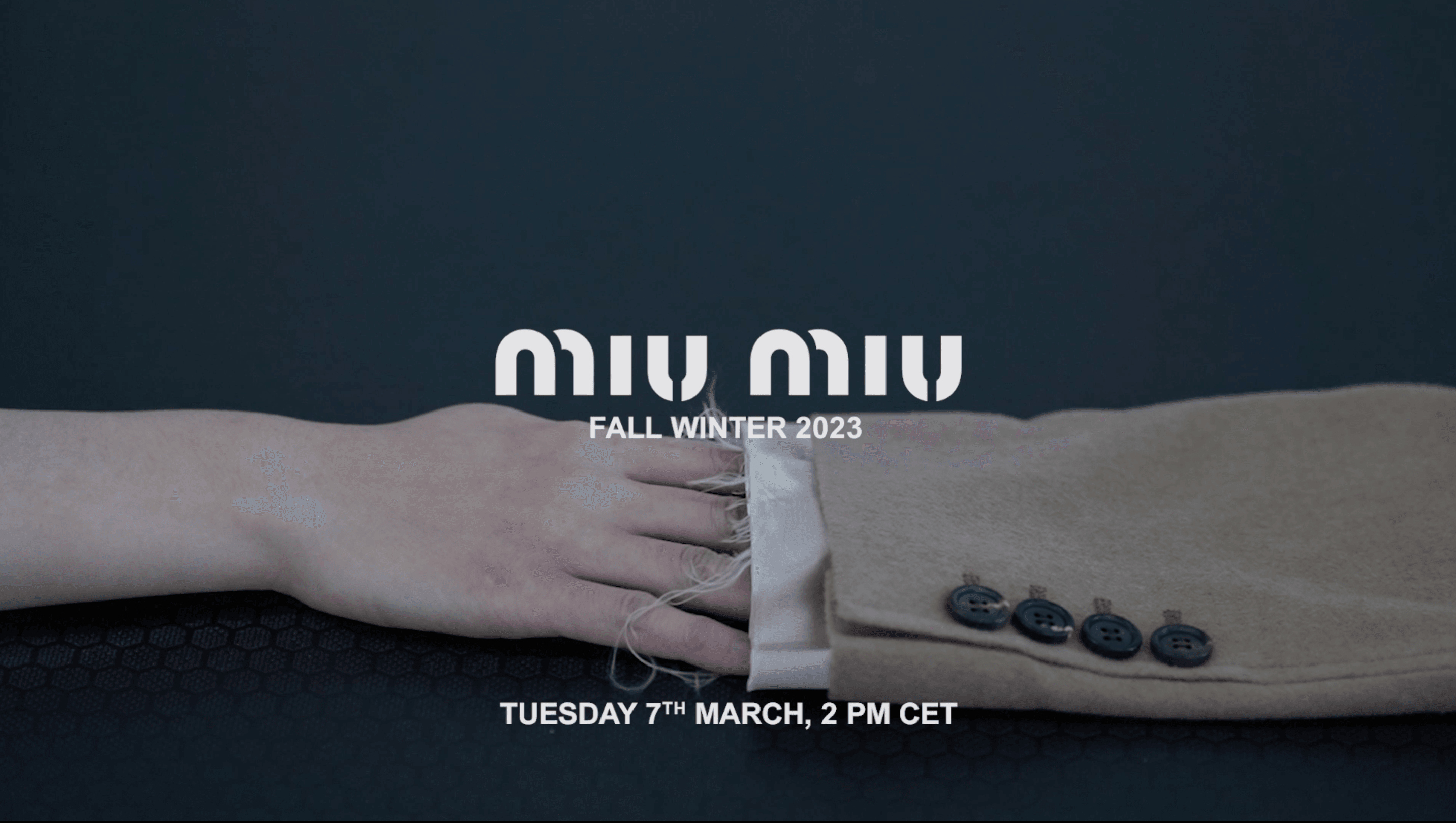

I feel that the same thing is happening to the Miu Miu Girl, on her 30th birthday: not a girl, not yet a woman. In fact, the very idea of the “girl” has evolved in the digital era to become an enigmatic category all her own. In 2023 we saw the rise of what I call “Girl Lore”: it started with the “girl dinner” (constant snacking on olives and hummus instead of three proper meals a day), after which came “girl math” (justifying a Miu Miu handbag when you can’t technically afford your shared household rent), and thereafter “lazy girl jobs” (putting in minimum effort at work that’s just enough to not get fired). Alex Quicho, in her Wired article “Everyone Is a Girl Online,” writes, “Consider that the girl is a symbolic category, unfixed from biological sex or social gender.” E-girls – known for being very online all the time as disassociated angel avatars – aren’t simply girls, but they also reject being adult women. They hover between known categories: feminist, post-feminist; subject, object; IRL, URL; consumer, irritant. In their 1999 manifesto Preliminary Materials for a Theory of the Young-Girl, Tiqqun laid down much of the psychoanalytic theory underpinning “Girl Lore” in such pronouncements as, “the Young-Girl is obsessed with authenticity because it is a lie.” There’s an avenging power to the girl-cipher today that summons a lineage running from Joan of Arc to Lolita to Sailor Moon.
To me, the recent Miu Miu epoch seems to mirror the complexity found in the space between girl and woman. Mrs. Prada told The New York Times Style Magazine, “It’s a lot about being against something.” What, I wonder, if that something is a strict definition of “the girl”?
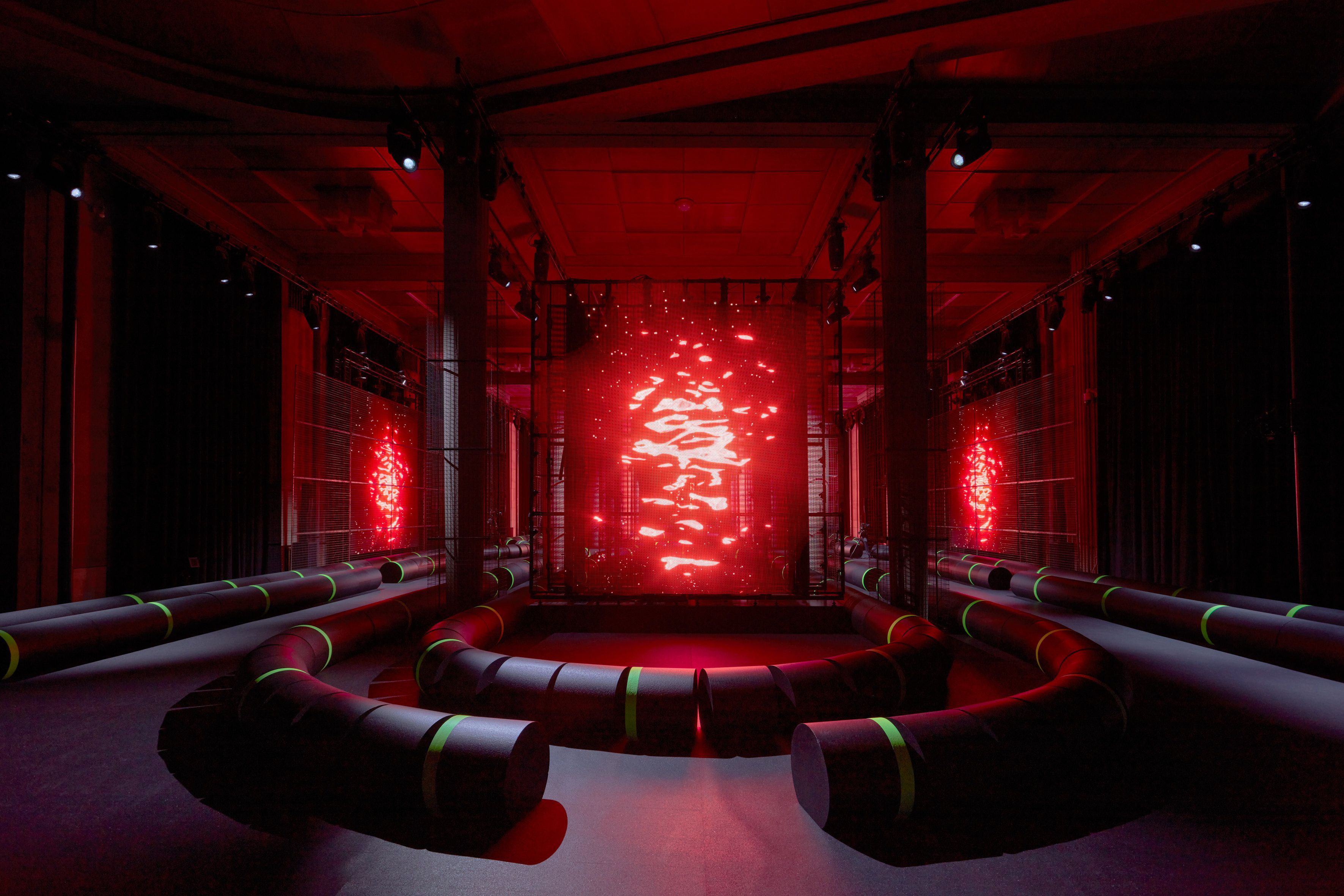
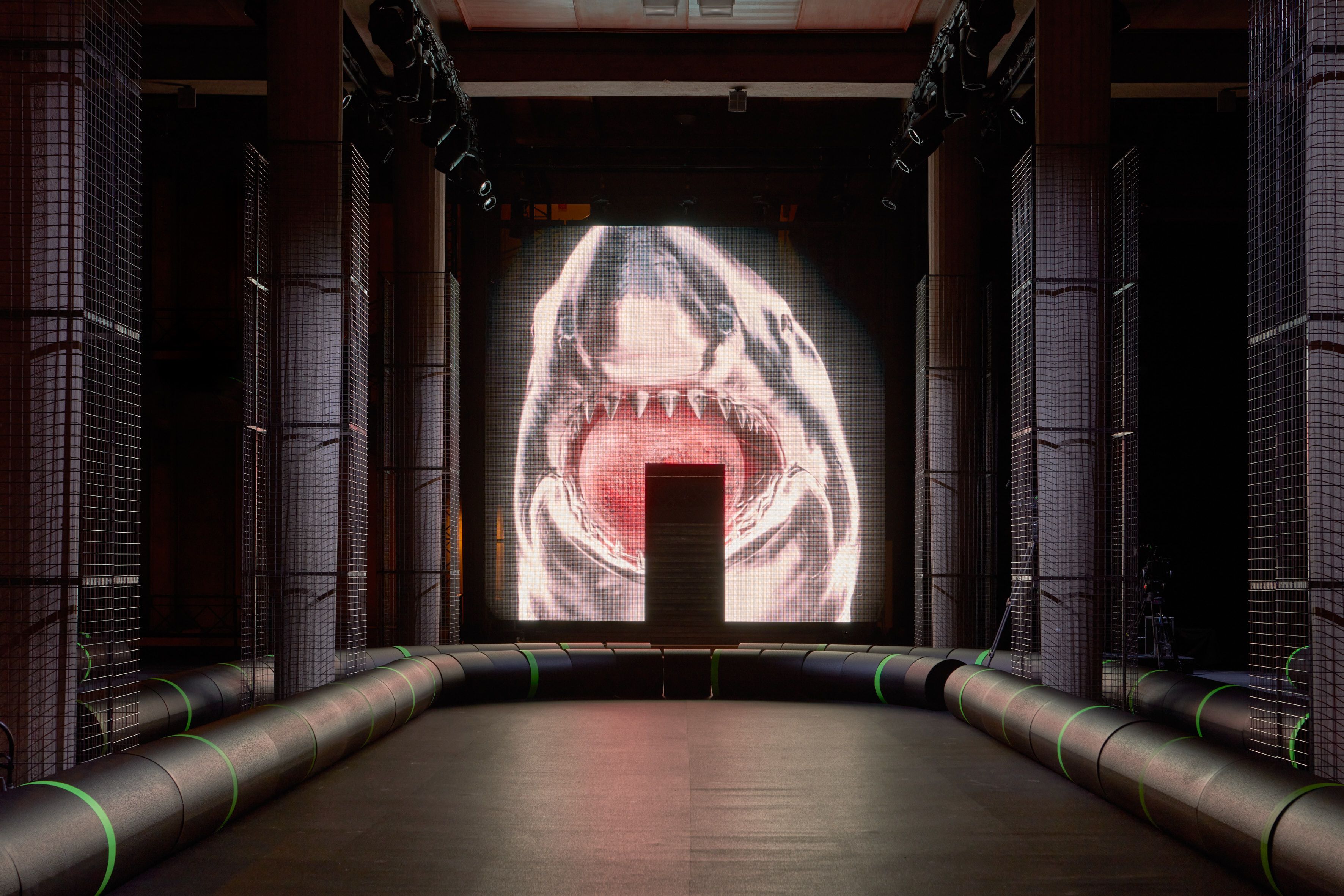
AND, NOT OR
The complexity of not being one thing at once but many things at many times is increasingly explored through Mrs. Prada’s collaborations and collateral initiatives. She once told me that her education began with reading the classics of literature and going to arthouse movies in the 1960s and 70s. Her lifelong admiration for storytelling and cinema translates into the Women’s Tales initiative, a commissioning platform begun in 2011 that invites female filmmakers to dwell on “vanity and femininity.” In 2023, its 25th and 26th films – directed, respectively, by Lila Avilés and Antoneta Alamat Kusijanovi – were released. And this summer, Miu Miu launched the Women’s Tales Committee, consisting of filmmaker Ava DuVernay; actress, writer, and director Maggie Gyllenhaal; and costume, production, and set designer Catherine Martin. Alongside Mrs. Prada and her confidante Verde Visconti, the committee “will shape the intellectual, cultural and industry direction of Women’s Tales.”
“Through fashion,” Mrs. Prada explains, “I can collaborate with female directors on Women’s Tales and with female artists for [Miu Miu] fashion show sets: it’s a way to broaden the dialogue, and to have a commentary on today’s world.” Artists who have been chosen to produce original video work alongside Miu Miu shows include Meriem Bennani, Shuang Li, Nathalie Djurberg and Hans Berg, and Geumhyung Jeong. Their contributions bring out the gesamtkunstwerk nature of a fashion show, which is the equivalent of today’s grand opera: costumes, music, set design – and, crucially, an audience that, especially on the FROW, is an active participant in the brief, sensual, heightened drama of seeing and being streamed. As Sophia Al-Maria says at the start of her Miu Miu fashion show film, channeling opera’s fatalistic moral imperative: “You’re not the hero in your own story. You’re the villain in someone else’s.”
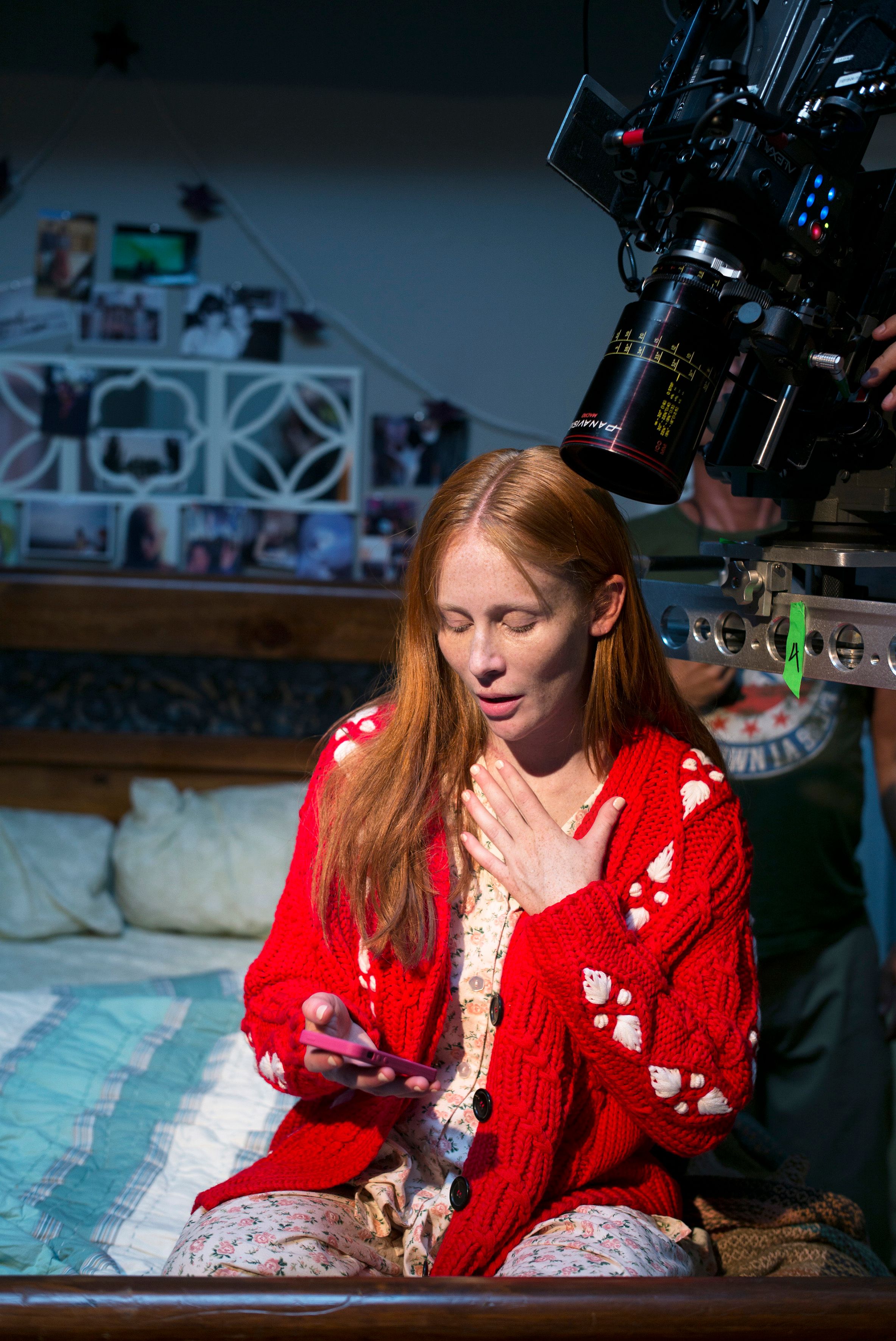
Not long after the Miu Miu show in Paris, I found myself at a symposium called “Tashkent Modernism” held in the capital of Uzbekistan. There, architect and writer Rem Koolhaas – one of Mrs. Prada’s longest consistent collaborators – gave a lecture about his longstanding interest in “preservation.” One particular slide stood out: two curves intersecting. The upward curve was “nostalgia,” and as it increased over time, the “memory” curve decreased inversely. Koolhaas’ office OMA not only designs the scenographies for all Miu Miu and Prada shows, but they also gave shape to the Fondazione Prada complex in Milan, where historic industrial buildings from the 1910s enclose new, polemically future-oriented architecture (part of which, the Deposito, is home to every Prada fashion show – most recently featuring curtains of oozing ectoplasmic slime).
Everything that Mrs. Prada elicits across the empire of arts, film, science, and clothing invokes this preservation of the past as a liberating mechanism to reimagine the present. It’s a perpetual in-betweenness, as it were. Tender complexity. Studied contradiction. Girl, Not-Woman, Other. This is the anti-sexy sexy in-betweenness of the Miu Miu Moment.
All images courtesy Miu Miu.
Credits
- Text: SHUMON BASAR

